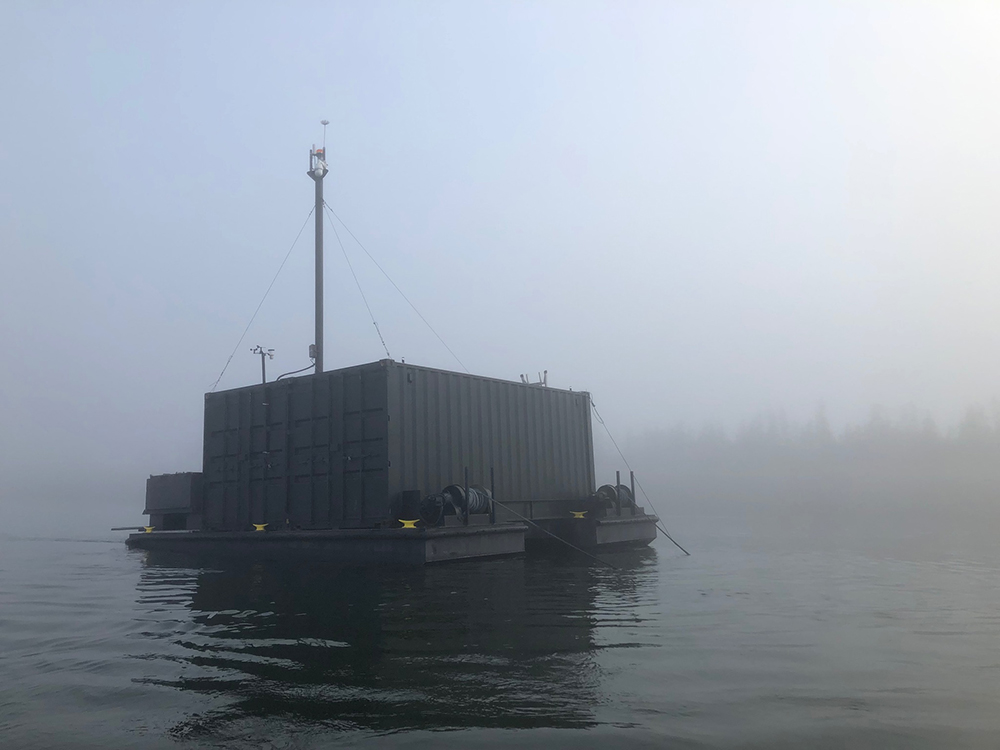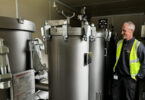Exclusive interview: H2O Global News Editor, Sion Geschwindt, spoke with BigMoon Power President & CEO, Andy Jenkins, about their low-cost, low-impact solution to harnessing the power of the tides.
It’s a misty morning out in the Bay of Fundy, Novia Scotia, which lies right at the Eastern tip of Canada. The water is calm and glassy but not for long. The tide is turning.
The Bay of Fundy’s tides are the highest on earth. Twice each day, 160 billion tonnes of seawater flow in and out of the bay – more than the combined flow of all the world’s freshwater rivers.
For decades people have been tapping into this renewable energy resource, with varying degrees of success. The bay has become something of a testing ground for tidal energy companies to ‘flex their tech’.
One company, BigMoon Power, has developed a low cost, low-impact rig that improves upon a tried and tested technology: the water wheel. BigMoon’s mission is to apply their solution to harness tidal energy in a way that is economically viable, and environmentally and socially sustainable.
Tidal energy: A brief history
Tidal energy was first harnessed over a thousand years ago in the tide mills of England and Ireland. The idea was simple; the ebb and flow of the ocean turned a water wheel which powered a milling device to crush grain.
This design survived the test of time, with many water mills still in operation today. However, contemporary tidal energy systems are much more complex. Most involve dam-like barrages, turbines tied to the ocean floor or giant floating rigs.
However, there are numerous technical difficulties when working in marine environments, especially in high tidal zones. To boot, many designs are complex, expensive and can pose environmental risks. It is for these reasons why tidal energy production and investment is still very limited globally, despite its huge potential.
In the Bay of Fundy, several companies have tried, and some have failed, to produce electricity from the world’s highest tides. One project that went bottom-up was the Cape Sharp Tidal project, a joint venture between OpenHydro Ltd. and Emera Inc., the parent company of Nova Scotia Power. The experimental in-stream turbine, which cost a fortune to build, has sat abandoned at the bottom of the bay since September 2018 after OpenHydro declared bankruptcy.
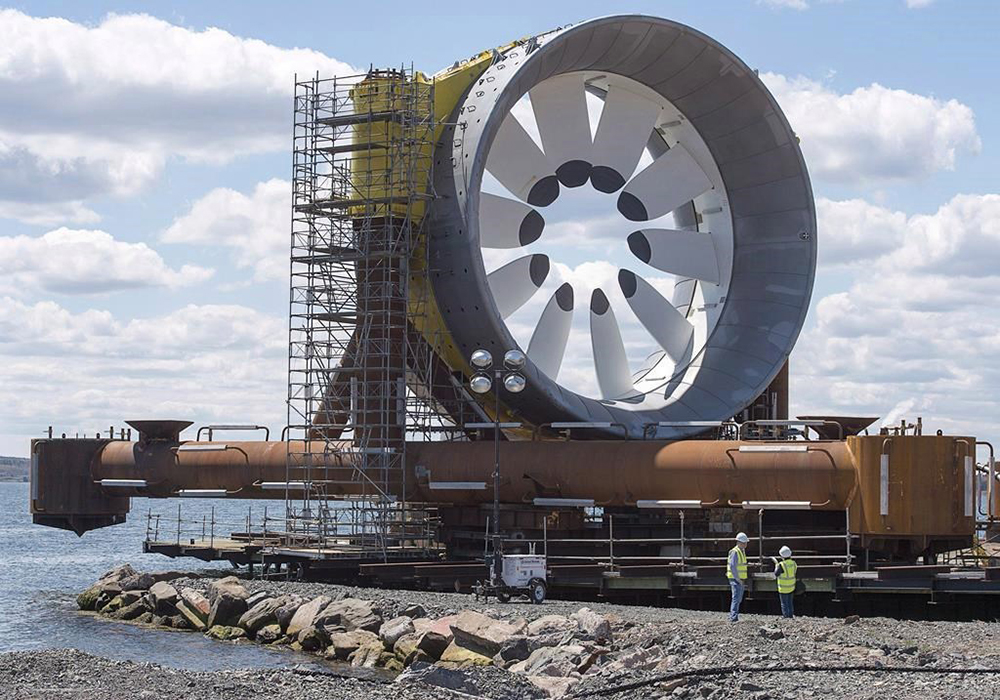
Cape Sharp Turbine (THE CANADIAN PRESS/Andrew Vaughan)
But other companies have shown more promise. One of which, is BigMoon Power.
BigMoon has been testing its theories and prototypes since 2015, after the Novia Scotian government granted them a crown lease to an area in the Bay of Fundy’s Minus Basin.
Reinventing the wheel
According to Offshore Energy, the Bay of Fundy is the most promising location in Canada for tidal energy, with a theoretical generation capacity of 30,000 MW (enough to power almost 20 million homes).
One of the main advantages of tidal power is that it is 100% predictable
“Tides offer huge potential as a renewable energy source,” said BigMoon President & CEO, Andy Jenkins. “One of the main advantages of tidal energy is that it is 100% predictable, and can support wind and solar when the wind isn’t blowing and the sun isn’t shining.”
Through years of R&D, BigMoon have come up with a relatively low-tech, but smart, solution that makes harnessing the tides relatively simple, affordable and sustainable.
“We wanted to design a technology that was commercially viable right out of the gate, operated on the surface and could easily be assembled using readily available components,” said BigMoon President & CEO, Andy Jenkins. “We wanted to make the technology as simple as possible, so we took a traditional water-wheel design and optimised it – we call it ‘reinventing the wheel’.”
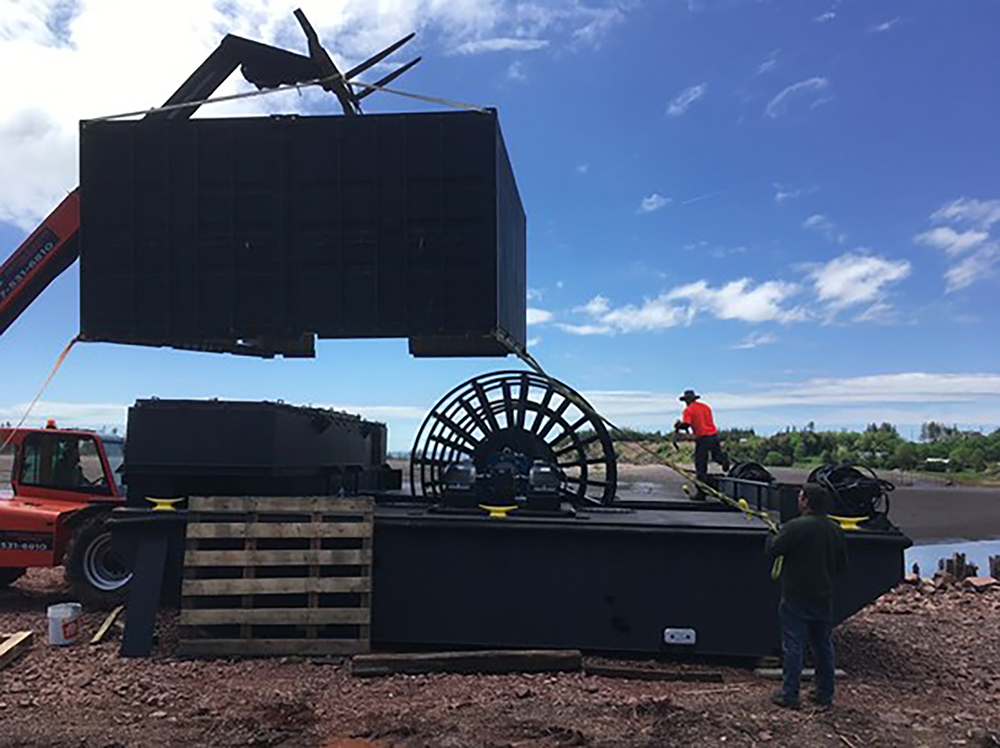
“Reinventing the wheel”
Each unit has a large wheel suspended between the pontoons of a 30-metre barge anchored to the ocean floor. The barge swivels as the tide changes, just like a boat anchored to the seabed.
The unit connects to a subsea cable that transmits the power generated, to the grid. The cable was laid by the Fundy Ocean Research Centre for Energy (FORCE), Canada’s leading research facility for tidal stream technology.
FORCE was set up by the government to better understand how this technology can play a role in Canada’s clean energy future and to encourage private sector investment in tidal power production. FORCE provide a nurturing ground for the expansion of tidal energy worldwide.
“We tested our technology in the Bay of Fundy first because if it can withstand the conditions here, it can work anywhere,” said Jenkins.
This litmus test of durability is what the Novia Scotian Department of Energy calls the “Fundy Standard”. Tidal devices operating in the bay endure tides moving at speeds up to 5 metres per second, rising up to 16 metres vertically, and expanding up to 5 kilometres horizontally. If companies succeed here, they can succeed anywhere.
Creating a viable long-term solution is about more than technology, it’s about relationships.
But creating a viable long-term solution is about more than technology, it’s about relationships. The Bay of Fundy is an area of unique natural and cultural importance, and so the success of tidal energy projects here hinges on the ability to operate sustainably and acquire a legitimate social license.
Working together
The Bay of Fundy is part of Mi’kma’ki, the ancestral and unceded territory of the Mi’kmaq First Nations peoples, who have been stewards of this land for over 13,500 years.
“We understood that our technology is new and should have the acceptance of the broader community of Novia Scotia,” said Jenkins. “We got sign off from all the Mi’kmaw chiefs and other local stakeholders before starting operations.”
BigMoon also commissioned a series of extensive research projects to assess the diversity, seasonal abundance, migration patterns, and size structure of fishes in Canada’s Minas Basin.
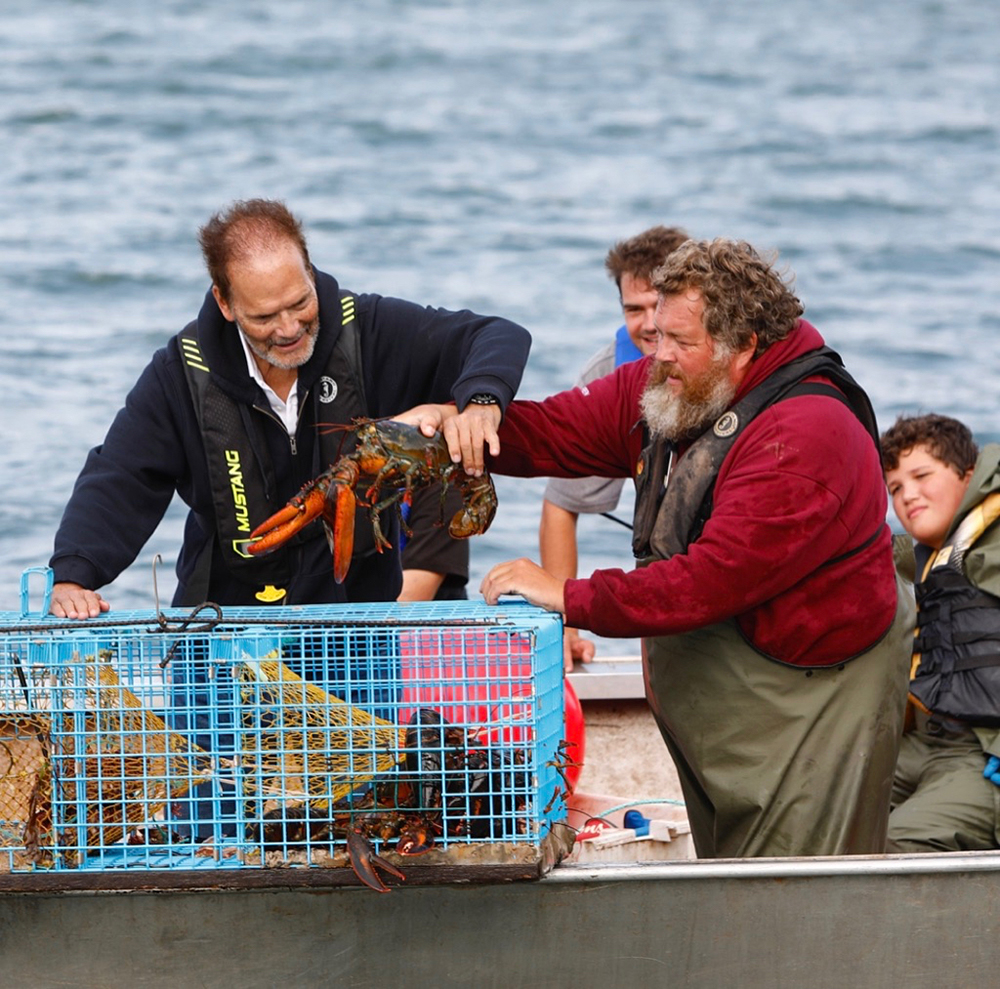
The Lobster study commissioned by BigMoon
The Lobster study was the first of its kind done in collaboration with local fishers, Mi’kmaw, academics and the tidal industry, which has helped to cement relationships between the various stakeholders that share the Bay.
“When we looked at some of the failed projects, we saw they were putting billions of dollars into building technology overseas, shipping it to Novia Scotia on the shores of local communities and not working with local people – it leaves a bad taste in everyone’s mouth,” said Jenkins. “We try to do everything – design, manufacture, operations and maintenance – locally, and put every dollar of spend back into the community.”
By being transparent and engaging with local communities, BigMoon is changing the way that tidal power is perceived and accepted. This not only improves the industry’s chances of success, but ensures that projects are carried out sustainably and fairly.
The tides are changing
After piloting their technology since 2015, BigMoon has recently been granted a contract to supply electricity to the public power utility, Nova Scotia Power.
Over the next three to four years, the company plans to build a total of 18 units, each generating about half a megawatt of electricity, with a combined capacity to power about 5000 homes.
And this is only the beginning.
“We’ve developed prototypes that clean and purify water as well as produce electricity for remote communities,” said Jenkins. “We’re in very developed discussions with the governments of Peru and Brazil to install these solutions in off grid communities on the Amazon.”
From Canada to Brazil, the tidal energy space is one to watch. Having learnt from the mistakes of the past, there are many promising new approaches to harnessing the power of the tides, sustainably.
These are complicated environments and it won’t be easy, but there is no question it can be done
“If there’s enough energy in the Bay of Fundy to power whole portions of the entire country, who knows the potential in other parts of the world. Yes, these are complicated environments and it won’t be easy, but there’s no question it can be done,” said Jenkins. “It’s 100% clean, renewable, safe. We know that we’re focused on the right thing so we’re just going to keep innovating and coming up with better ways to solve the problem.”
Take a look at BigMoon’s Instagram page for more inspiration.
Do you have an article that you would like to share? Submit your article here or keep up with the latest news from the water industry and wastewater industry by subscribing to our weekly newsletter.



